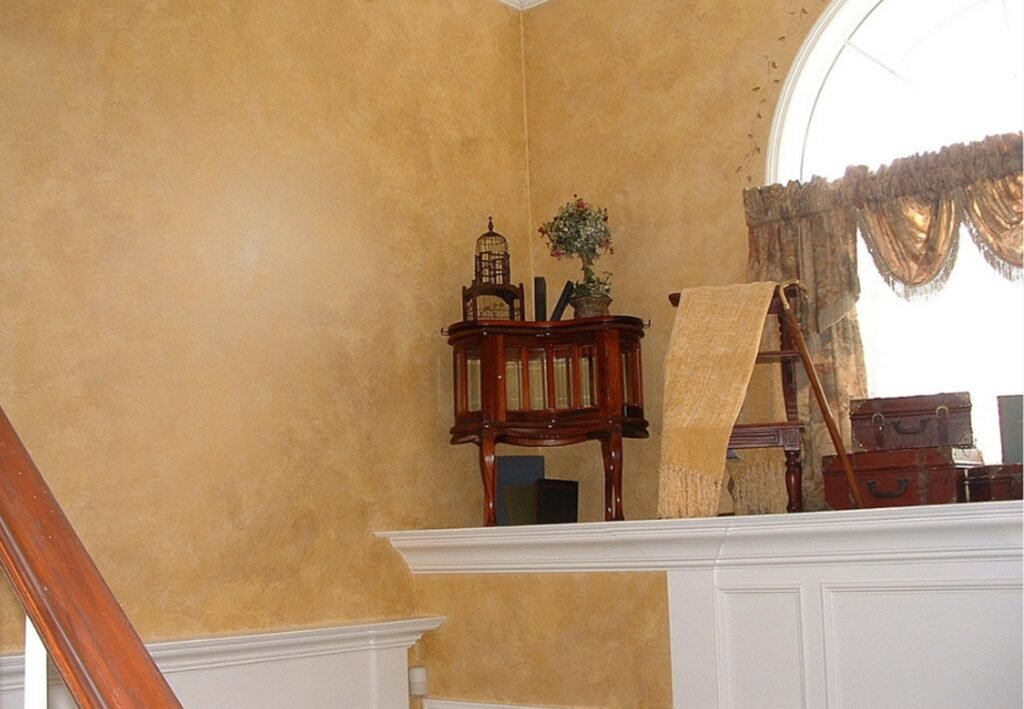Faux finish painting is one of the hottest trends in home décor in recent years.
A faux finish can do so much for a space; it can create texture and depth, add a splash of color or elegance to an otherwise boring room, or simply create a mood.
Photo by Unique Technique Custom Painting & Faux Finishes – Search entryway design ideas
It’s affordable and it’s easy.
Faux leather painting technique to an existing wall color will create a warmth and a comfortable library feel.
The beauty of faux finishing leather isn’t only in the final look of the application, it’s also the fact that you can erase or mask many minimal problems with your walls like small dings and dents.
1| Prepare the Surface and Protect the Floor
Remove all of the face-plates from your electrical outlets and switches and remove the nails. Patch the holes with water based filler and sand them with 180 grit paper.
Mask the edges of the wall with painter’s tape. Place painter’s tape along the borders to the ceiling, windows and doors or anywhere else you don’t want the paint to get on.
Protect the floor with a drop cloth.
2| Paint on the Base Coat
Cover the walls with a coat of the cream latex paint using the roller. It may requires two coats for best coverage. Allow time to dry.
3| Make the Paint-Texturing Tool
Create a paint-texturing tool with a cut-up chamois cloth.
a) Cut the chamois into several strips, each about 2″ by 4″.
b) Gather the strips in your hand, and wrap a rubber band around one end of the bunch to make a many-layered paint-texturing tool.
4| Mix the Tan Latex Paint and Glazing Medium
a) Mix the tan latex paint and glazing medium until you have the desired color for your walls.
b) With a pouncing technique, use a foam brush to apply glaze along the edges of the first section of wall you’ll be glazing.
c) Use a paint roller to apply the glaze to the section of wall.
NOTE: The glaze will dry quickly, so it’s best to work on a small portion of the wall at a time.
5| Blot Off Some of the Glaze
a) Dip the chamois painting tool in water and squeeze out the excess.
b) Pat it on the wall to remove some of the glaze.
c) As the glaze is drying, take a clean cloth and dampen it with water. Pat it against the wall to help soften the appearance of the leather.
d) Continue across the wall in this manner, applying glaze and texturing the surface with the chamois tool and then a rag. Work in small sections: glaze dries quickly.
NOTE: Taking your time and painting a section of wall at a time is the key to successful faux leather walls.
Venetian Stucco – A Decorative Painting Type (howtobuildahouseblog.com)

